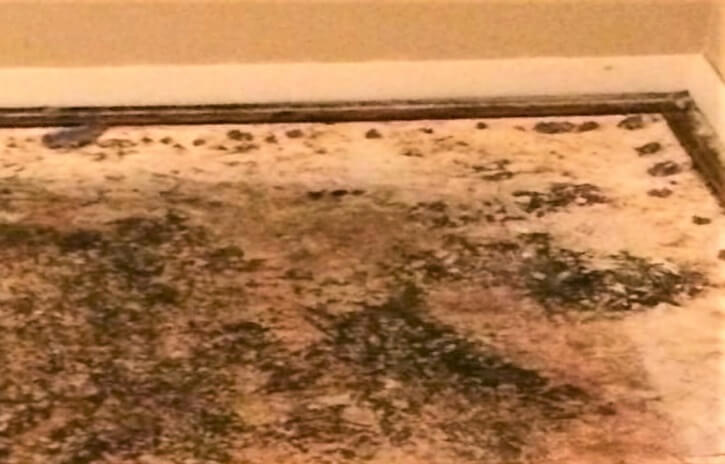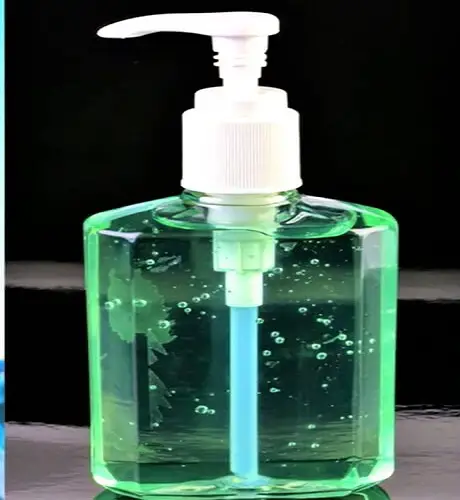| Note: This article may contain affiliate links, which means if you make a purchase following our links won’t cost you extra, but we may earn a commission. Learn more |
Mold can grow in hot water heaters under the right conditions. The ideal temperature for mold growth is 77 degrees Fahrenheit, and hot water heaters typically operate between 120 and 140 degrees Fahrenheit. In order for mold to grow in a hot water heater, there must be moisture present.
This can come from condensation on the tank or pipes, a leak in the tank or plumbing, or even from using hot tap water to fill the tank. If you suspect that mold is growing in your hot water heater, it’s important to have it inspected by a professional as soon as possible.
If you have ever had a water heater leak, you know that mold can quickly start to grow in a damp environment. But what about if your water heater is turned up too high and starts to produce steam? Can mold still grow in hot water heaters?
The answer is yes, unfortunately. While the steam from your water heater may not be as conducive to mold growth as standing water, it can still provide the moisture that mold needs to thrive. If you notice any signs of mold growth in or around your hot water heater, it’s important to take action immediately.
If you think that your hot water heater is the cause of mold growth in your home, the first thing you should do is turn it off and call a professional. Mold remediation experts will be able to identify the source of the problem and determine the best course of action for getting rid of the mold. In some cases, simply turning down the temperature on your water heater may be enough to stop the mold from growing.
However, if there is significant damage or if there are health concerns involved, it may be necessary to replace the entire unit. No matter what steps you take to get rid of mold in your home, it’s important to remember that prevention is always better than cure. Be sure to keep an eye on your hot water heater and address any leaks or moisture problems right away.
By taking these simple precautions, you can help prevent dangerous mold growth in your home.

Can Mold Get in Your Water Pipes?
Mold is a type of fungi that can grow both indoors and outdoors. It’s commonly found in damp, warm areas like bathrooms and kitchens, but it can also grow in other places where there is moisture, such as in your water pipes. While mold is generally not harmful to humans, some people are allergic to it and it can cause respiratory problems.
If you suspect that mold is growing in your water pipes, it’s important to have them inspected by a professional as soon as possible.
How Do You Kill Bacteria in a Hot Water Heater?
If you have a hot water heater, it’s important to know how to kill bacteria that can grow in the unit. Bacteria can cause problems with the quality of your hot water and also lead to health issues. There are a few different ways to kill bacteria in a hot water heater.
One way is to use a product called bleach. Bleach is effective at killing bacteria and other microorganisms. To use bleach, simply add it to the tank of your hot water heater according to the manufacturer’s directions.
Be sure to follow the directions carefully, as using too much bleach can damage your hot water heater.Another way to kill bacteria in a hot water heater is by using vinegar. Vinegar is an acidic substance that can effectively kill bacteria.
To use vinegar, simply add it to the tank of your hot water heater along with some cold water. Let the mixture sit for several hours before draining it out and flushing the unit with fresh water.You can also use special commercial products that are designed specifically for killing bacteria in hot water heaters.
These products are available at most hardware stores and home improvement centers. Be sure to follow the manufacturer’s instructions when using these products.
Can Heaters Grow Mold?
Mold can grow just about anywhere there is moisture, food, and the right temperature. This means that heaters can provide the ideal conditions for mold to grow if they become wet or develop a leak. While most people think of mold as something that only grows outdoors, it can also thrive indoors given the right circumstances.
If you have a heater that is leaking water, it’s important to clean it up immediately and dry the area completely. You should also check for any signs of mold growth and remove them promptly if you find any. Mold can cause serious health problems, so it’s important to take care of this problem as soon as possible.
What Temperature Will Kill Mold?
Mold is a type of fungi that can grow both indoors and outdoors. It thrives in warm, damp, and humid environments and can often be found in basements, bathrooms, kitchens, or anywhere else that is moist. While mold is necessary for the breakdown of organic matter, it can also cause health problems for humans if it grows inside our homes.
Mold spores are invisible to the naked eye and float through the air until they find a suitable place to land and start growing. When mold spores land on a wet or damp surface, they begin to grow and multiply. Mold reproduces by releasing small airborne spores which settle on other surfaces and start new colonies.
In order to kill mold, you must first remove the source of moisture. Once the mold has been dried out, it can then be removed with a stiff brush, or HEPA vacuum cleaner, or disposed of with bleach. The temperature at which mold will die depends on the type of mold you are dealing with.
Some molds can survive freezing temperatures while others will only die if exposed to temperatures above 140 degrees Fahrenheit (60 degrees Celsius).
Mold in Hot Water Kettle
If you’ve ever found mold in your hot water kettle, you’re not alone. While it’s not the most pleasant discovery, it is relatively common. Here’s what you need to know about mold in hot water kettles and how to prevent it.
Mold can grow in any type of food-grade container, including hot water kettles. The key is moisture and warm temperatures. When these conditions are present, mold can quickly take hold.
The good news is that mold in a hot water kettle is generally harmless. However, if you have allergies or respiratory sensitivities, it’s best to err on the side of caution and get rid of the mold as soon as possible.So how do you clean a hot water kettle with mold?
First, empty out any remaining water from the kettle. Then, fill the kettle with a mixture of equal parts white vinegar and water. Let this solution soak for 30 minutes before emptying it out and rinsing the kettle well with clean water.
To prevent mold from growing in your hot water kettle, be sure to empty it out after each use and allow it to dry completely before storing it away. You might also want to consider using distilled or filtered water instead of tap water, as this can help reduce the risk of contamination.
The Water Heater Closet Smells Like Mildew
If your water heater closet smells like mildew, try opening up the closet door and airing out the space. If that doesn’t work, you can try using a dehumidifier in the space.
If those two options don’t work, you can try using a product like a Mold Armor to clean and disinfect the area.
How to Get Rid of Mold in Water Tank?
Mold is a type of fungi that can grow in many different environments, including on surfaces like water tanks. While mold itself is not harmful, it can release spores into the air which can cause respiratory problems for some people. Additionally, mold can cause staining and discoloration of surfaces.

If you have noticed mold growing on your water tank, there are some steps you can take to get rid of it. One way to remove mold from a water tank is to use a solution of bleach and water. The ratio of bleach to water will depend on the size of your tank and the severity of the mold growth.
Once you have mixed the solution, simply apply it to the affected areas with a sponge or brush. Allow the solution to sit for several minutes before rinsing it off with clean water. You may need to repeat this process several times to completely remove all traces of mold.
If you do not want to use bleach, there are other options available as well. Vinegar is a natural disinfectant and can be used in place of bleach if desired. Simply mix equal parts vinegar and water in a spray bottle and apply it to the affected areas in the same manner as you would with bleach.
You may also want to try using rubbing alcohol or hydrogen peroxide solutions, although these may not be as effective as bleaching or vinegar solutions.
Water Heater Causing Humidity
If your water heater is causing humidity in your home, there are a few things you can do to mitigate the problem.
1. Make sure that your water heater is properly vented. If it is not, this could be causing the issue.
2. You can also try opening a window or running a fan to help circulate the air and reduce the humidity.
3. If you have an electric water heater, you may want to consider turning down the temperature to reduce the amount of steam that is produced.
Read More: Is It Safe To Use A Patio Heater In A Garage?
Finally
Yes, mold can grow in your hot water heater. The ideal temperature for mold growth is 77-86 degrees Fahrenheit. Mold needs moisture and a food source to grow, and your hot water heater provides the perfect environment for mold to thrive.
If you notice mold growing in your hot water heater, you should clean it immediately to prevent the mold from spreading.